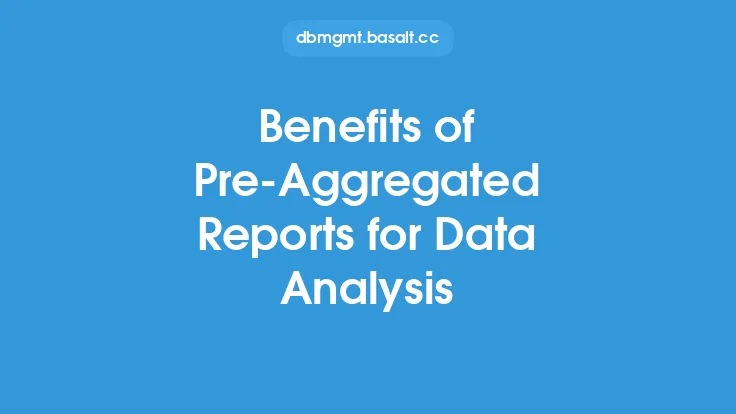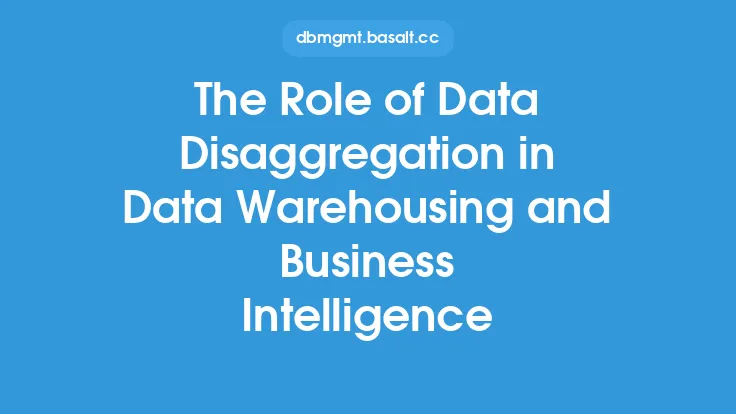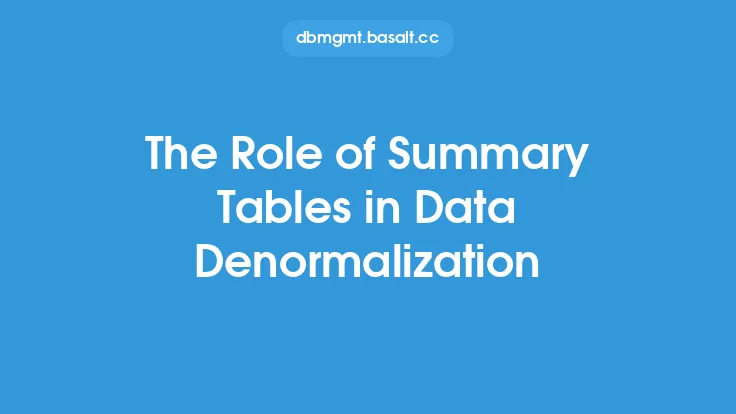In the realm of data analysis and business intelligence, dealing with complex data queries and analytics can be a daunting task. The sheer volume and variety of data, coupled with the need for swift and accurate insights, pose significant challenges for organizations seeking to make informed decisions. One strategy that has emerged as a powerful tool in simplifying these complexities is the use of pre-aggregated reports. By pre-computing and storing aggregated data in a readily accessible format, these reports significantly reduce the computational load and time required to generate insights from large datasets.
Introduction to Pre-Aggregated Reports
Pre-aggregated reports are essentially summaries of data that have been computed and stored in advance. This pre-computation is based on anticipated queries and analytics needs, allowing for rapid retrieval of aggregated data without the need for real-time computation. The concept leverages the principle of data denormalization, where data is intentionally duplicated or stored in a manner that optimizes query performance, even if it means sacrificing some level of data normalization. The primary goal of pre-aggregated reports is to enhance the efficiency and speed of data analysis by providing immediate access to aggregated data, thereby simplifying complex data queries and analytics.
Technical Aspects of Pre-Aggregated Reports
From a technical standpoint, implementing pre-aggregated reports involves several key considerations. First, it requires a deep understanding of the data schema and the types of queries that will be run against the data. This understanding is crucial for determining which data to pre-aggregate and how to structure these pre-aggregations for optimal query performance. Additionally, the process of pre-aggregation must be automated and integrated into the data pipeline to ensure that the pre-aggregated data remains up-to-date and consistent with the underlying data sources.
Data Denormalization and Pre-Aggregated Reports
Data denormalization is a critical aspect of pre-aggregated reports, as it involves storing data in a way that is optimized for reading, even if it means that the data may become inconsistent or outdated unless regularly updated. In the context of pre-aggregated reports, denormalization allows for the storage of pre-computed aggregates, which can then be queried directly without the need for complex joins or aggregations at query time. This approach can significantly improve query performance, especially in scenarios where complex analytics are performed regularly.
Benefits for Complex Data Queries and Analytics
The use of pre-aggregated reports offers several benefits for simplifying complex data queries and analytics. Firstly, it enables faster query execution times, as the aggregated data is already computed and stored. This is particularly beneficial for ad-hoc queries or exploratory data analysis, where rapid iteration and feedback are essential. Secondly, pre-aggregated reports can reduce the load on the database, as fewer computational resources are required to generate insights. This can lead to improved overall system performance and reduced costs associated with database maintenance and scaling.
Implementation Considerations
Implementing pre-aggregated reports requires careful consideration of several factors, including data freshness, storage requirements, and the trade-offs between query performance and data consistency. For instance, while pre-aggregated reports can significantly improve query performance, they may also introduce data latency if not updated frequently enough. Moreover, the storage requirements for pre-aggregated data can be substantial, especially for large datasets, which may necessitate additional infrastructure investments.
Conclusion
In conclusion, pre-aggregated reports play a vital role in simplifying complex data queries and analytics by providing rapid access to pre-computed aggregated data. Through the strategic use of data denormalization and pre-computation, organizations can significantly enhance their data analysis capabilities, improve query performance, and reduce the computational load on their databases. As data volumes continue to grow and the demand for swift and accurate insights intensifies, the importance of pre-aggregated reports in the arsenal of data analysis tools is likely to increase, offering a powerful solution for navigating the complexities of modern data landscapes.





